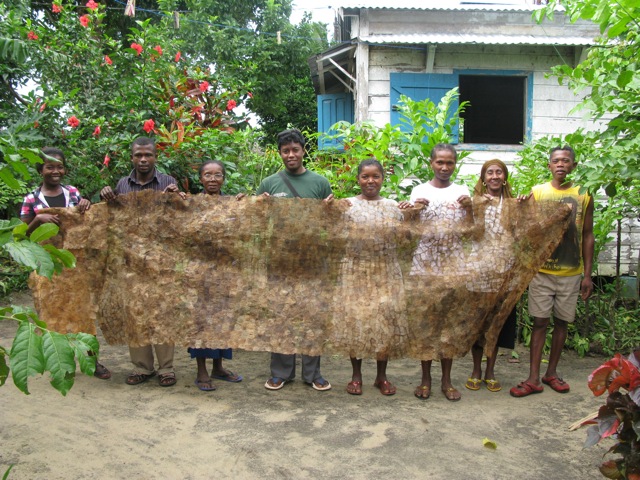
John Lewis 100% traceable new wool mattress range
With a metallic sheen and inspirational back story, an innovative silk textile from Madagascar offers designers and manufacturers two new opportunities: to head in fresh directions aesthetically, and to build good will with consumers by helping to sustain subsistence farmers and ecosystems in one of the world's most endangered biodiversity hotspots. Five years ago, CPALI (Conservation through Poverty Alleviation, International; www.cpali.org

17th November 2010
Innovation in Textiles
|
Makira National Park, Madagascar
 With a metallic sheen and inspirational back story, an innovative silk textile from Madagascar offers designers and manufacturers two new opportunities: to head in fresh directions aesthetically, and to build good will with consumers by helping to sustain subsistence farmers and ecosystems in one of the world's most endangered biodiversity hotspots.
With a metallic sheen and inspirational back story, an innovative silk textile from Madagascar offers designers and manufacturers two new opportunities: to head in fresh directions aesthetically, and to build good will with consumers by helping to sustain subsistence farmers and ecosystems in one of the world's most endangered biodiversity hotspots.
Five years ago, CPALI (Conservation through Poverty Alleviation, International; www.cpali.org ), a non-profit organization, began prospecting the area around the Makira National Park in northeastern Madagascar for wild moths that spin new kinds of silk. Madagascar is one of the 20 poorest nations in the world yet this tiny nation is also home to 5% of the world’s plants and animals that are found nowhere else.
As farmers slash and burn forest to secure land for their crops, wider environmental destruction ensues, which in turn further degrades resources available to the farmers and their families. CPALI researchers discovered that the silkworms living around the farmers' fields produced silk of a quality and in a quantity that could appeal to world markets.
By planting the native trees the worms feed on, the farmers could begin to restore their environment and replant a buffer around the Makira Protected Area. And by harvesting and selling the silk, they could generate income that could help pay for market goods, health products and their children's school fees. The farmers would have a long-term financial stake in maintaining Madagascar's rich biological heritage. Moreover, their new income would mean they would be able to afford to respect the boundaries of protected areas.
CPALI's first textiles are now coming to market. Workers hired in the farmers' villages hand- and machine-sew lightly processed cocoons into porous sheets of textile that shift tone as light hits from different angles. The textile is fire resistant and naturally comes in hues ranging from light browns through bronze to deep browns. It dyes easily but does not bleach. A number of designers are currently using this unusual silk fabric to create prototype lighting fixtures, wallpaper, fashion accessories, window shades, and jewelry.
CPALI's pioneer farmers are already reaping income and have incorporated improved planting techniques into their families' farming practices. Having seen the benefits of CPALI's approach, more farmers are in line to sign up for silkworms and training in how to plant the silkworms' food plants, monitor the silkworms' and moths' development, and sustainably harvest their cocoons. CPALI has partnered with major conservation organizations in order to ensure that its efforts have the desired ecological effects. All profits from the textile are returned to operations so that more farmers and farmer families in Madagascar can take part in the project.
An added benefit of CPALI's silk textile is that it may be attractive to consumers seeking wildlife-friendly or cruelty-free products. Domesticated silk production aims for a cocoon that can be unravelled as a single continuous thread. Production workers therefore kill the silkworms while they are still in the cocoon so they can't break severe the thread when they emerge. In contrast, CPALI farmers allow moths to emerge naturally from the chrysalis and mate. The adults are protected so that the eggs they lay can hatch into the next generation of silk producers.
For further information, visit www.cpali.org

Business intelligence for the fibre, textiles and apparel industries: technologies, innovations, markets, investments, trade policy, sourcing, strategy...
Find out more